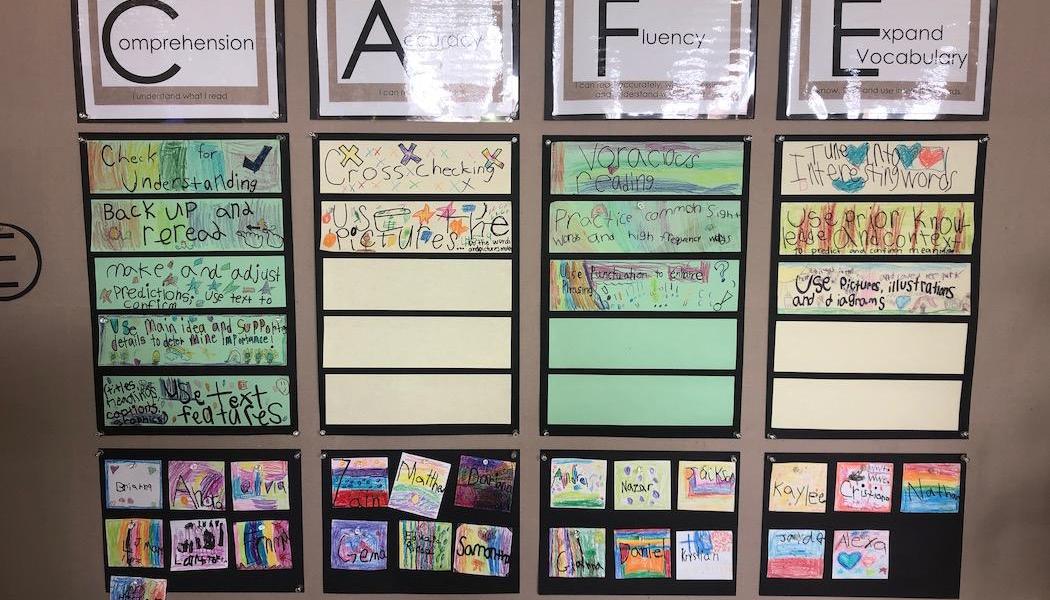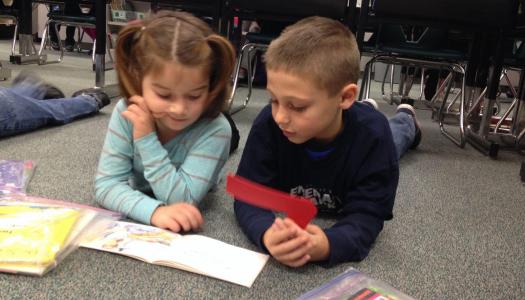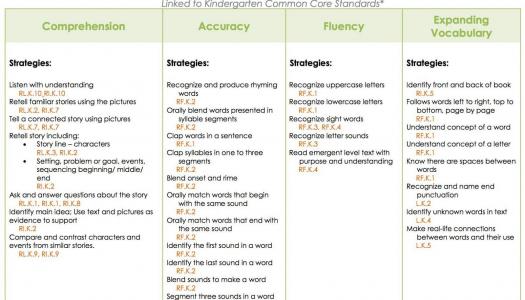Introducing CAFE in Kindergarten

Join Our Community
Access this resource now. Get up to three resources every month for free.
Choose from thousands of articles, lessons, guides, videos, and printables.
The CAFE Menu is a list of strategies, organized by goal, that students can access to support their reading. Posted on the wall, it serves as a visual aid to help them remember previously taught strategies. So, what does this look like in Pre-K or kindergarten, before students are reading words independently? The menu looks the same, but the way we interact with it is slightly different.
At the beginning of the year, we post the acronym C A F E on the board, leaving space below for the student-friendly definitions, strategies, and student names to be posted later.
In the first few weeks of school, as it fits in best with the students’ readiness, we introduce the menu and each of the four goal areas.
TEACHER: Boys and girls, if you look here, you will notice the letters C-A-F-E, which spells CAFE. A CAFE is a restaurant where people go to eat breakfast, lunch, or dinner. When you go to a CAFE, you usually get a menu that lists the food they have available. Each person orders food based on the time of day, how hungry they are, and what they like to eat. Food helps our bodies grow.
This word you see on our wall says CAFE, and this is going to be our literacy CAFE. Instead of food, which helps our bodies grow, this menu will help us grow as readers. Our menu will be filled with reading strategies. We will build this menu all year long. Are you ready to know what the first section of the menu is?
CLASS: Yes!
TEACHER: It is C, and the C stands for comprehension. When readers have comprehension, it means they understand what they have read. You will see that I have the word comprehension here, and I am going to post it under the letter C. Can you say comprehension?
CLASS: Comprehension!
TEACHER: Comprehension means “I understand what I read.” I am going to take this definition and put it under the word comprehension. Can you read it with me?
TEACHER and CLASS: Comprehension. I understand what I read.
Following this introduction, we refer to the goal on the menu every time we talk about a text and work on our comprehension. When we think we have referenced the goal and definition of comprehension enough that the majority of the class knows and understands it, we introduce the next goal, Accuracy, and its definition. We revisit goals and definitions daily, adding as we go, until all four literacy goals and their definitions are introduced and posted.
Once all four goals are posted, we begin introducing reading strategies and add them to the menu. In a classroom of established readers, we post strategies, knowing students will reference them as needed when reading independently during the literacy block. In a classroom of emergent readers, we model the use of the strategy and post it on the menu for students to reference as listeners during whole-group lessons. Then, as students transition to independent reading, they have exposure to strategies they can begin to use as readers.







